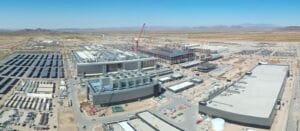In the fourth monthly NAIOP survey measuring the impact of the COVID-19 crisis on the commercial real estate industry, respondents say that deal activity is improving across most major sectors of the industry, but more now expect impacts from the crisis to affect their businesses for an additional 12-18 months.
“July continued a trend of positive growth in reported industrial, office and multifamily building acquisitions activity, with more respondents reporting having witnessed these deals than in previous months,” said NAIOP President and CEO Thomas J. Bisacquino.
AZRE Forum: A look at office and industrial
The increase in building acquisitions activity was most notable for industrial properties, with 92.6% of respondents witnessing these acquisitions in July, compared with 70.7% in June. Reported development activity also increased for industrial, office and multifamily properties in July, with the first significant increase in office property development since the April survey.
“Although increased office activity suggests the sector is improving, these deals remain uncommon in many markets, with a slight majority of respondents (52.2%) having witnessed no office deals in the last three weeks. Retail property deals remain uncommon, with 79.6% of respondents witnessing no new retail acquisitions or development,” Bisacquino said.
Although commercial real estate fundamentals generally appear to be improving, more respondents now expect the outbreak’s effects on their businesses to last longer than in previous months.
Exactly half (50.0%) of respondents now expect the coronavirus will impact their business operations for more than a year, compared with 39.7% of respondents in June and only 36.4% of respondents in April. This increase in pessimism about the duration of the pandemic may in part be a reaction to rapid growth in the number of reported COVID-19 cases across the U.S. since June.
This shift in sentiment also comes as more developers face delays in permitting and entitlements, delayed financing, supply shortages and contractors declaring force majeure or filing for bankruptcy as a result of the pandemic. The increased frequency of these disruptions is a reversal of earlier trends that had generally shown improving conditions for current development projects since April.
See the full release online, with charts.
See the complete research report.




